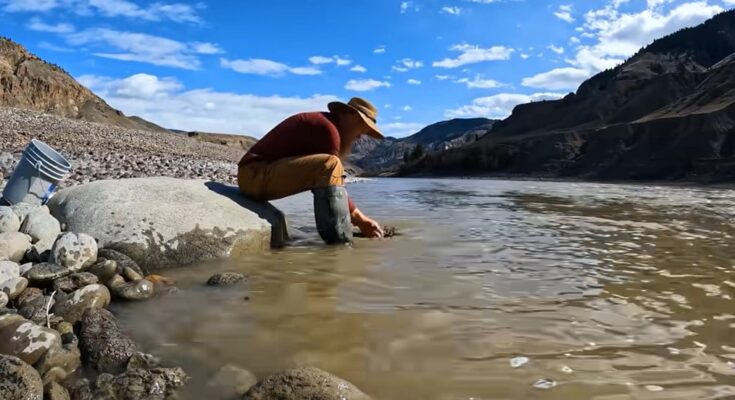The Fraser River in British Columbia has been a source of placer gold for more than 160 years and it has been a meeting point for amateur treasure hunters ever since.
It all began in 1858 when the discovery of gold sparked a massive influx of miners to the Fraser River valley, leading to the establishment of new towns and the rapid development of the region.
The Fraser Gold Rush was sparked by James Douglas, the then Governor of the Hudson’s Bay Company (HBC) in British Columbia. In February 1857, Douglas sent a sample of gold to the San Francisco Mint for assaying. The news of the discovery quickly spread, and by the spring of 1858, thousands of gold seekers from California and other parts of the world had descended on the Fraser River valley.
The miners, hoping to strike it rich, set up camps along the river and began panning for gold in the gravel bars. They also used sluice boxes and rockers to sift through the gravel, and some even built dredges to mine the riverbed.
The Department of Mines of British Columbia reported a yield of $28,983,106 in the period from 1860 to 1869. This placer gold at today’s price would be worth more than 300 million dollars.
Gold still found at Fraser River
Gold is still found in the Fraser River valley, but it is much less common than it was during the gold rush. The gold deposits that were easily accessible have been largely mined out, and the remaining gold is more deeply buried and difficult to find. However, there are still occasional reports of people finding gold flakes or small nuggets in the riverbed.
In recent years, there has been a resurgence of interest in gold panning in the Fraser River valley. This is due in part to the rising price of gold, which has made it more profitable to pursue small-scale mining. Additionally, there are now a number of companies that offer gold panning tours and classes, making it easier for people to get started.
In the bed of the river itself at each season of flood, a partial rearrangement of the material occurs and additional supplies of gold are brought in by the wearing away of the banks, a feature having an important bearing on the probable successful application of hydraulic mining to some of these deposits.
Though no longer exceptionally rich, the bars and benches of the Fraser River seem to afford a practically inexhaustible supply of gold.
While the chances of striking it rich are slim, gold panning can be a fun and rewarding activity. It is a great way to get outdoors, enjoy nature, and learn about the history of the Fraser River Gold Rush.
Related: The Places Where Gold Can Still Be Found in America



